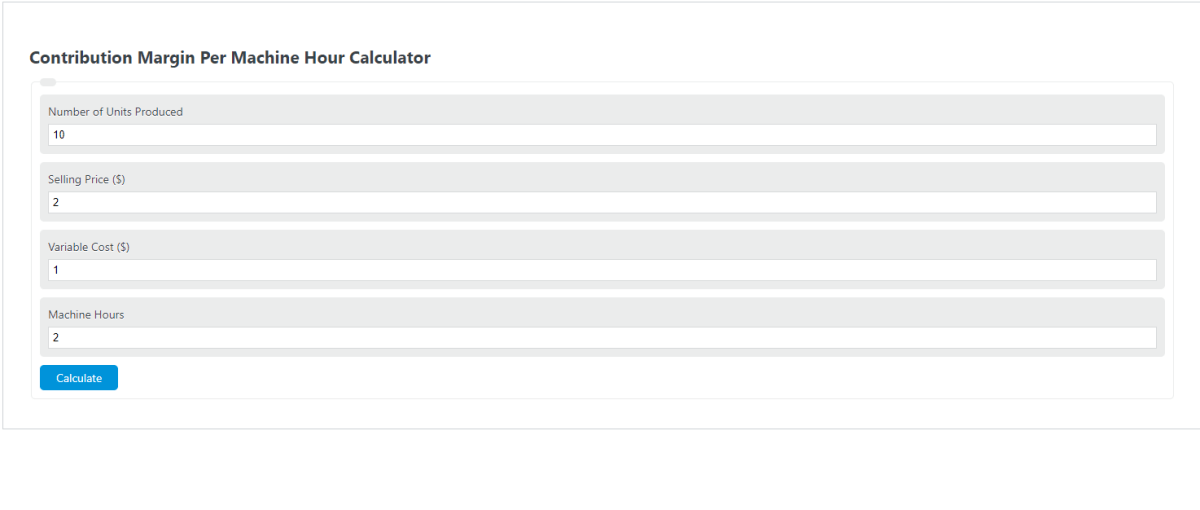Enter the total number of units sold, the selling price, variable price, and the number of machine-hours into the calculator to determine the contribution margin per machine hour.
- Contribution Margin Calculator
- Marginal Revenue Calculator
- Cost Function Calculator
- Marginal Product of Capital Calculator
Contribution Margin Per Machine Hour Formula
The following equation is used to calculate the Contribution Margin Per Machine.
CM/Mhr = [(SP*N) - (VP*N)] / MHr
- Where CM/Mhr is the contribution margin per machine hour (cm/hr)
- SP is the selling price ($)
- N is the number of units produced and sold
- VP is the variable price ($)
- Mhr is the number of machine hours
To calculate the contribution margin per machine hour, divide the contribution margin of the product produced by the machine by the total operational hours of the machine.
What is Contribution Margin Per Machine Hour?
Definition:
Contribution margin per machine hour (CMPMH) is a way for companies to understand how much profit they earn on a per unit basis. CMPMH looks at the total contribution margin divided by the total number of hours that were used to produce that contribution.
For example, if a company’s CMPMH ratio was $500,000 and they put 10,000 hours into production, they would earn $50 profit per hour.
For most companies, CMPMH will vary based on the type of service or product being sold.
A higher value indicates that there is room for improvement in the area it is being measured against. A company can then use this information to boost production while maintaining their current level of profit.
Contribution margin per machine hour is the most important metric in evaluating a piece of equipment, because it tells you how much profit you are making on every machine hour. This can also be computed by dividing contribution margin by sales volume, but that is more complicated and would require a sample of sales data.
Contribution margin is a measure of profitability that allocates overhead costs to products. Using contribution margin per machine hour, you can evaluate the profitability of each piece of equipment and compare its performance with that of other machines or plants. To be able to interpret the results, you have to know the total fixed cost for each machine or plant and the total variable cost for each product (machine-hours times variable cost per machine-hour).
